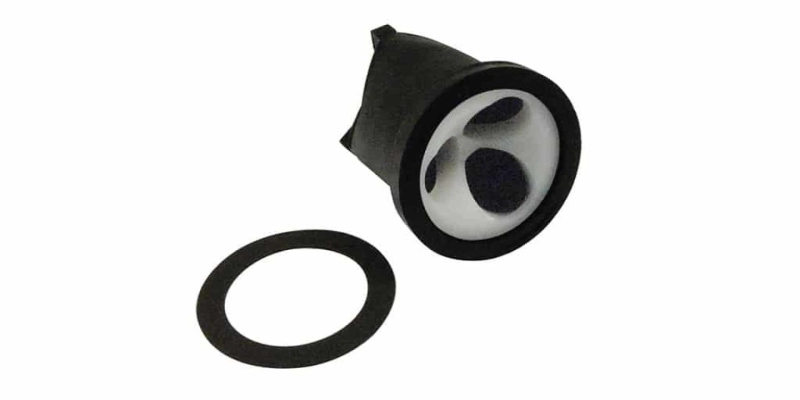Every time you turn on the faucet or flush a toilet, you’re relying on the smooth operation of a series of specialized, interconnected parts to deliver water to you at the right temperature, the right pressure, and, in the case of a vacuum breaker, to prevent backflow and leaks.
Some fixtures need specialized devices, called vacuum breakers, to ensure that water only flows through the plumbing in one direction. The operability of these parts does not only prevent leaks but also can serve as a sanitary safeguard, preventing water in separate lines from mixing and becoming contaminated.
The Function of a Vacuum Breaker
To keep things as simple as possible, a vacuum breaker is a device that fits onto a pipe and prevents water from flowing backward, only allowing it to move in one direction.
Under normal conditions, the pressure flowing in one direction through the vacuum breaker allows the valve to open and water to flow.
When the pressure drops, such as when the water is turned off, the valve shuts and air pressure against the outside of the valve keeps it closed until the water pressure rises again, allowing the valve to open (such as when the water is turned on.
Problems with Vacuum Breakers
While vacuum breakers are relatively simple pieces of plumbing equipment, they are not immune to faults and there are several circumstances that could damage them or hinder their ability to operate as intended. The following are some factors that could result in failure or compromise, necessitating remedy with a vacuum breaker repair kit.
● Age, normal wear and tear: After so many open and close cycles, a vacuum breaker will be at a greater risk of starting to leak. Over time, the seal of the valve will age and begin to wear out; oftentimes, a leaky poppet seal is an easy remedy and doesn’t require the replacement of the entire valve.
● Frost damage: Water is not compressible and when it freezes in a confined space the damage can be catastrophic. Water trapped inside a PVB under freezing conditions can cause the brass body to crack, necessitating the replacement of the entire vacuum breaker assembly. This is not likely inside of a building where vacuum breakers installed on flushometers will be located, however.
● Excessive debris in the water supply: Excessive debris in the water supply can also work its way under the valve, preventing it from sealing off the water supply when the water is cut off. Luckily, if the valve is in good shape, simply flushing out the valve can potentially forestall the need for a replacement kit.
If your pressure vacuum breaker is not working, there is a very good chance it is due to one of these factors. Investigate the matter and be ready with a quality PVB repair kit to restore functionality to the system.
Where Can You Get a Vacuum Breaker Repair Kit?
Keeping well stocked with the essentials is a matter of preparedness and efficiency. If you need a new supplier of commercial plumbing equipment, such as vacuum breaker repair kits, flushometer parts, thermostatic mixing valves, and more, visit Quality Plumbing Supply online at QualityPlumbingSupply.com.
They offer great prices on an encyclopedic collection of commercial plumbing parts and repair kits, straightforward and to the point. Get in touch with them at 1-833-251-4591.
For more information about Prier Hydrant Repair Kits and Bradley Thermostatic Mixing Valve Visit: Quality Plumbing Supply


